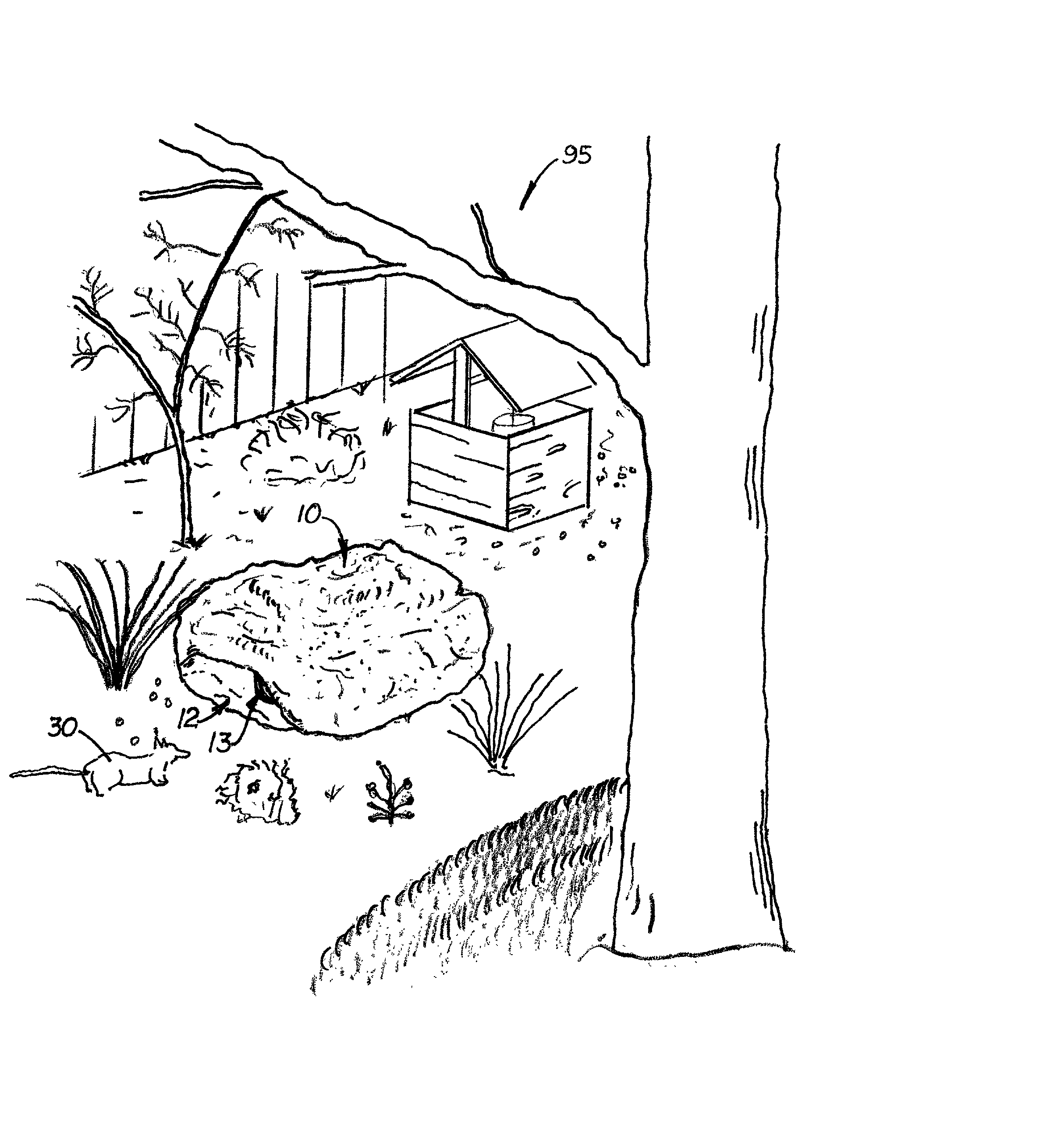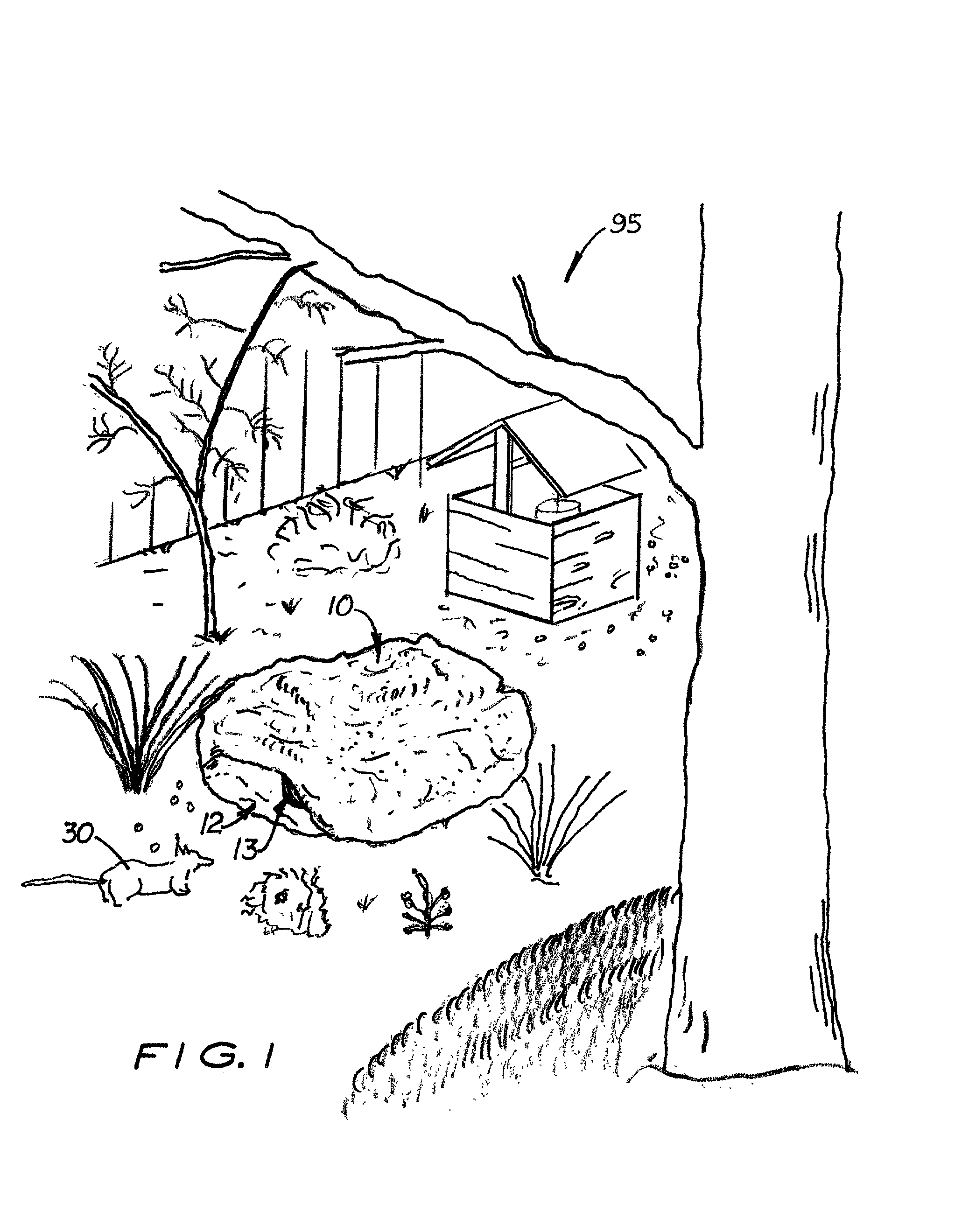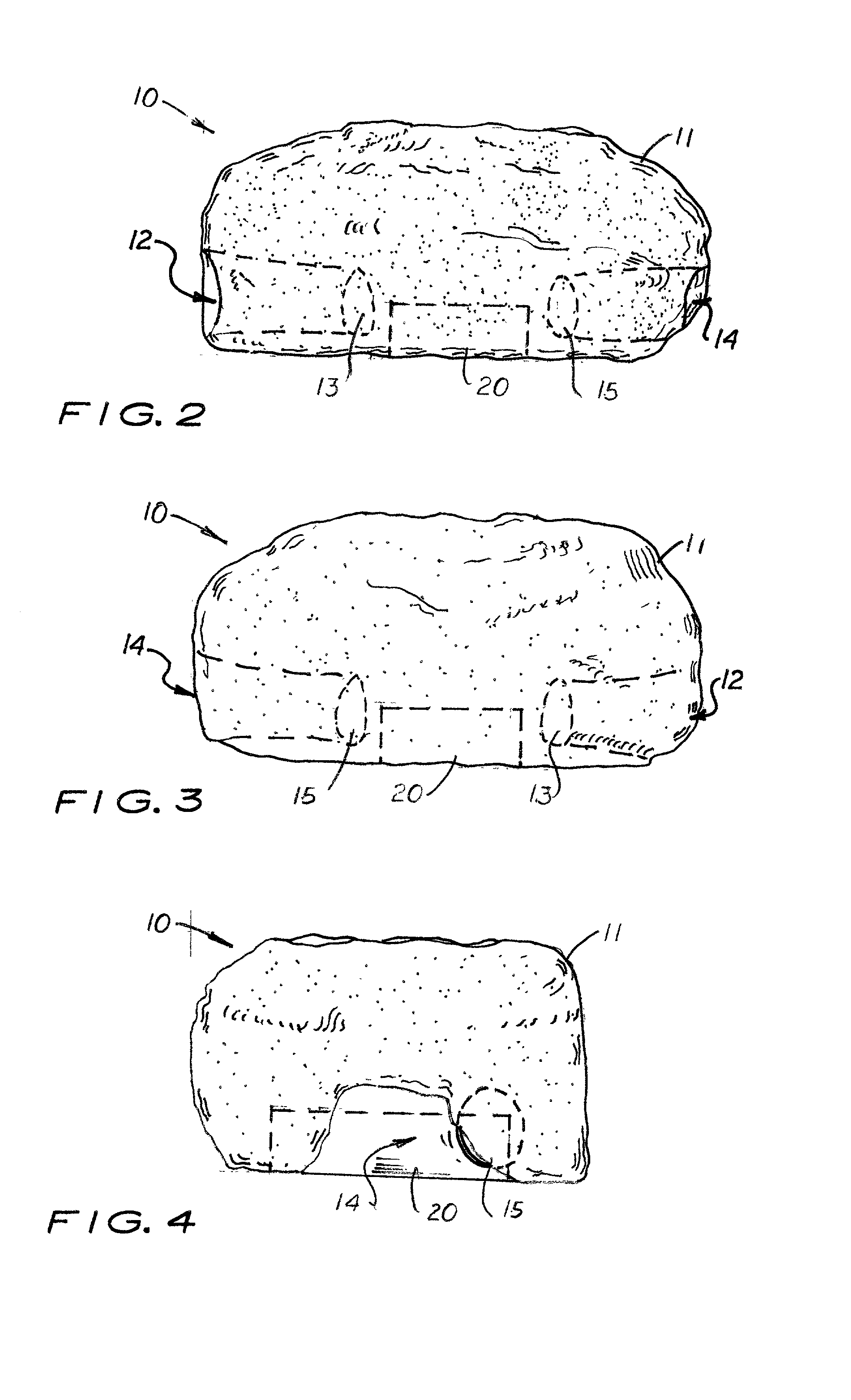Rock simulating pest trap
a trap and rock technology, applied in the field of rock simulating pest traps, can solve the problems of large outer housings, undesirable placement of traps in residences and businesses, and large number of homeowners
- Summary
- Abstract
- Description
- Claims
- Application Information
AI Technical Summary
Benefits of technology
Problems solved by technology
Method used
Image
Examples
Embodiment Construction
)
[0025] Referring to FIG. 1-5, there is shown and described a pest trap 10 designed to simulate a rock in a garden or landscape area 95. The pest trap 10 includes a hollow outer housing 11 with a large cavity 45 formed therein. Formed on the outer housing 11 are side tunnels 12, 14 that lead to the large cavity 45. Pest openings 13, 15 are formed on the sides of the outer housing 11 adjacent to the terminating inside surface of the side tunnels 12, 14 through which a rodent 30 or insects (not shown) may enter and / or exit the outer housing 11.
[0026] As shown in FIG. 6, the bottom surface 16 of the outer housing 11 is flat so that the outer housing 11 may be positioned on flat soil. Formed centrally on the bottom surface 16 is an opening 17 which provides the user access to the cavity 45. During assembly a holding tray 20 is inserted into the opening 17 and extending into the large cavity 45. An attachment means is provided for selectively attaching the holding tray 20 inside the open...
PUM
 Login to View More
Login to View More Abstract
Description
Claims
Application Information
 Login to View More
Login to View More - R&D
- Intellectual Property
- Life Sciences
- Materials
- Tech Scout
- Unparalleled Data Quality
- Higher Quality Content
- 60% Fewer Hallucinations
Browse by: Latest US Patents, China's latest patents, Technical Efficacy Thesaurus, Application Domain, Technology Topic, Popular Technical Reports.
© 2025 PatSnap. All rights reserved.Legal|Privacy policy|Modern Slavery Act Transparency Statement|Sitemap|About US| Contact US: help@patsnap.com



